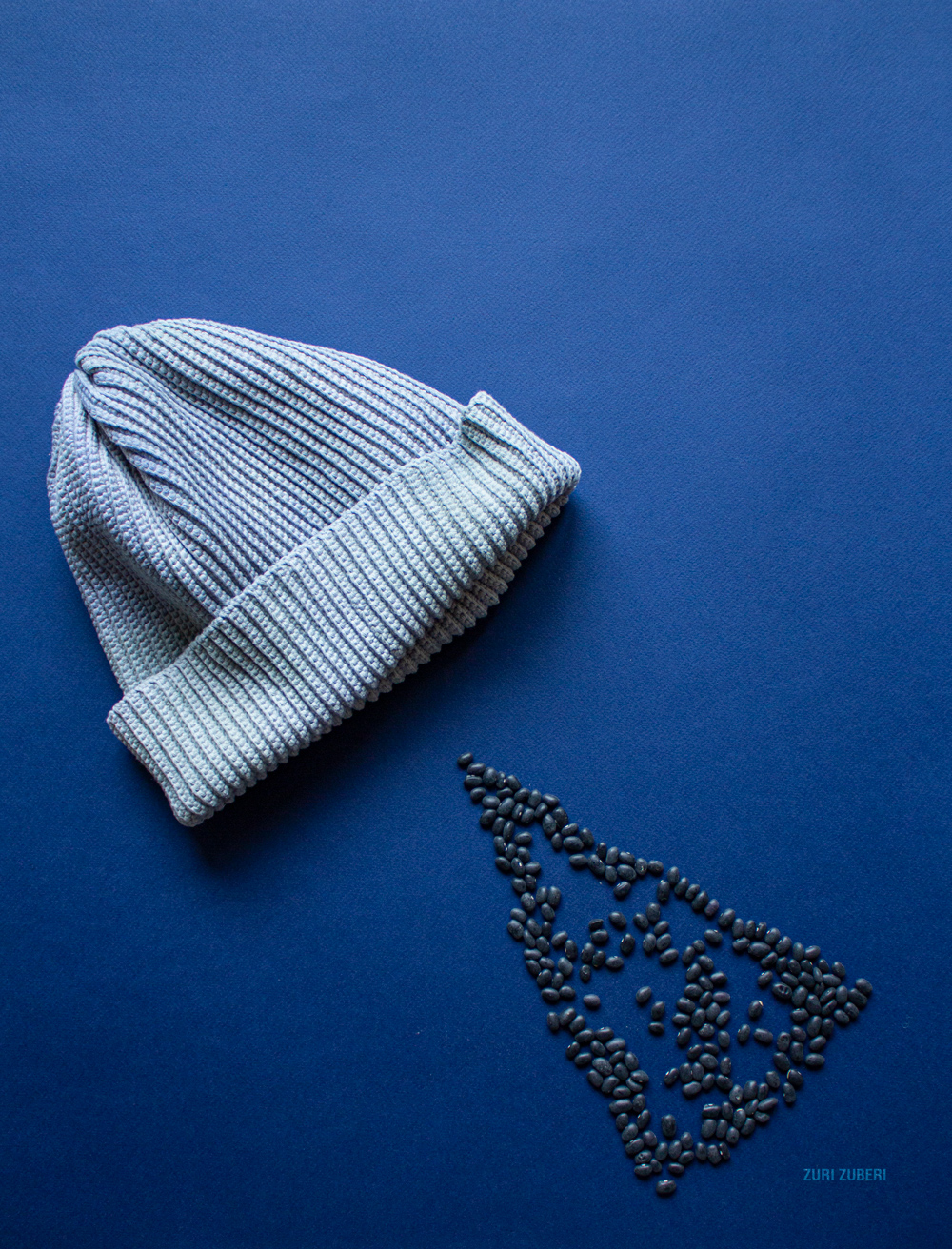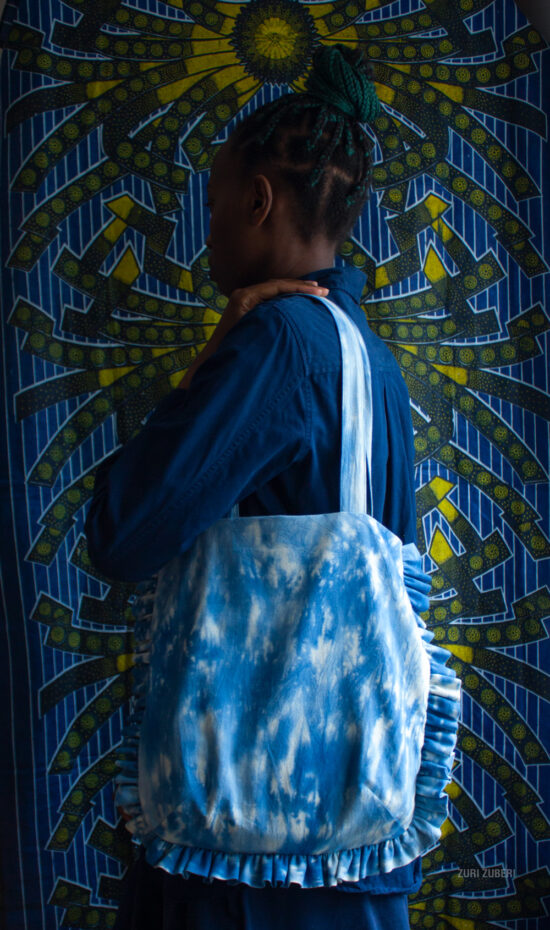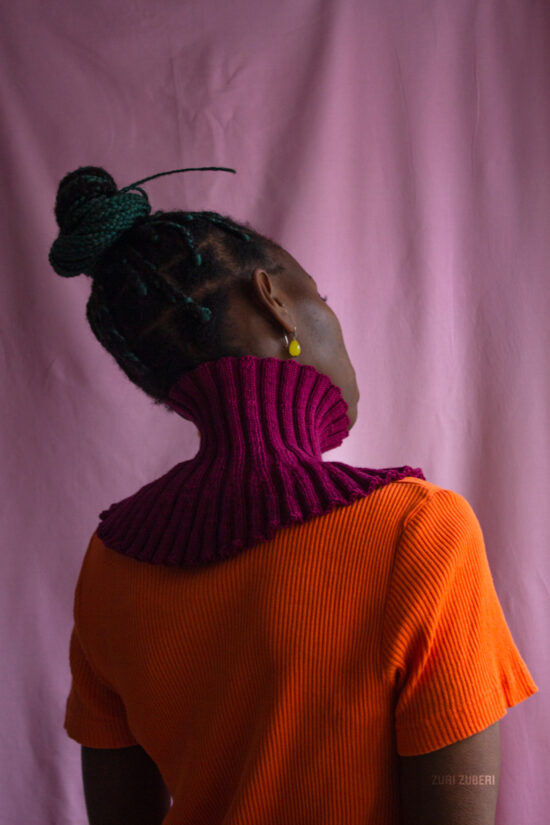Plant dyeing is something I’ve been curious about for years. I’ve tried to read up on the subject in books and online. Once I even signed up for a class that unfortunately got cancelled before it even started. At some point I thought about incorporating plant dyes in one of my school projects but the time constraints of the courses always put a stop to my plans.
So, despite all my curiosity and eagerness about plant dyes I had yet to get started with experimenting. Looking back, I think what held me back was the fear of toxic mordants since my workspace would be a regular kitchen that I share with others.
Then I started reading about people using soy milk as a “mordant” and got really excited. It is however, a bit misleading because soy milk is more a binder that helps the fibres absorb more dye and not a mordant that fixes the dye to the fibres.
After a bit of googling I decided to just jump in and experiment. I had this white beanie I had originally planned to tie dye with synthetic dyes but then thought it would be a good test piece for this project. It being a small item and something that doesn’t need to be washed so often. So I took my beanie, a bag of black beans and a whole lotta enthusiasm. Here’s what happened.
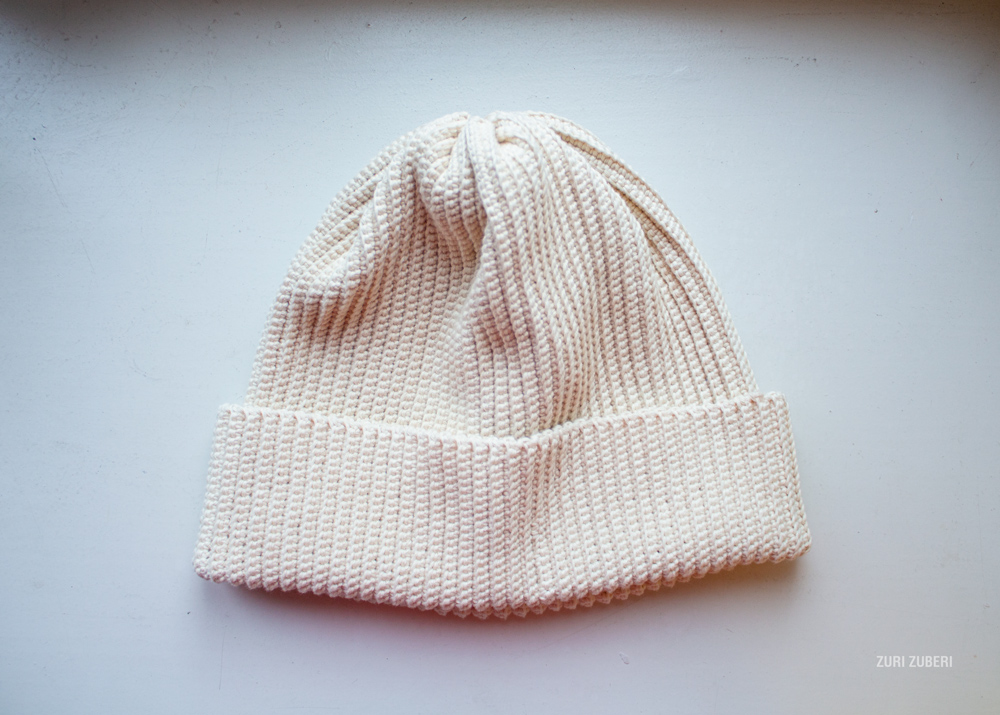
My starting point, a white crocheted beanie. I crocheted it the same way as my yellow beanie but made it smaller.
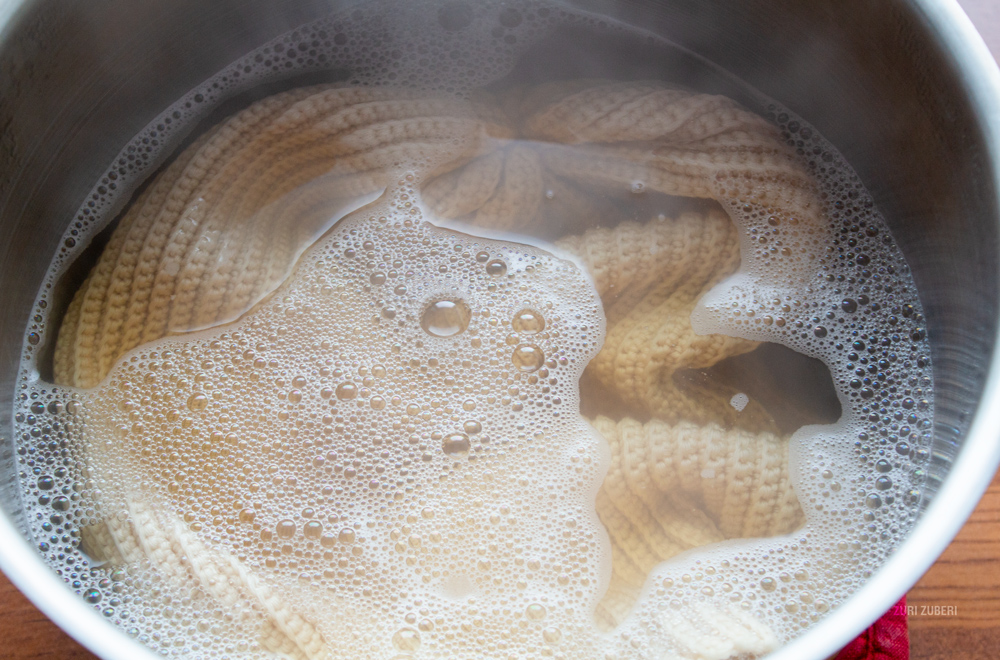
I didn’t have the chemicals required for scouring (which is a thorough cleaning of the fibres to get rid of possible waxes,oils and other factory treatments). I didn’t want to run an entire washing machine programme with just this beanie . I don’t own any white garments I could have washed it with and I feared it might get discoloured if I washed it with my other clothes. So I improvised and boiled the beanie with some regular dish soap for about 30 minutes.
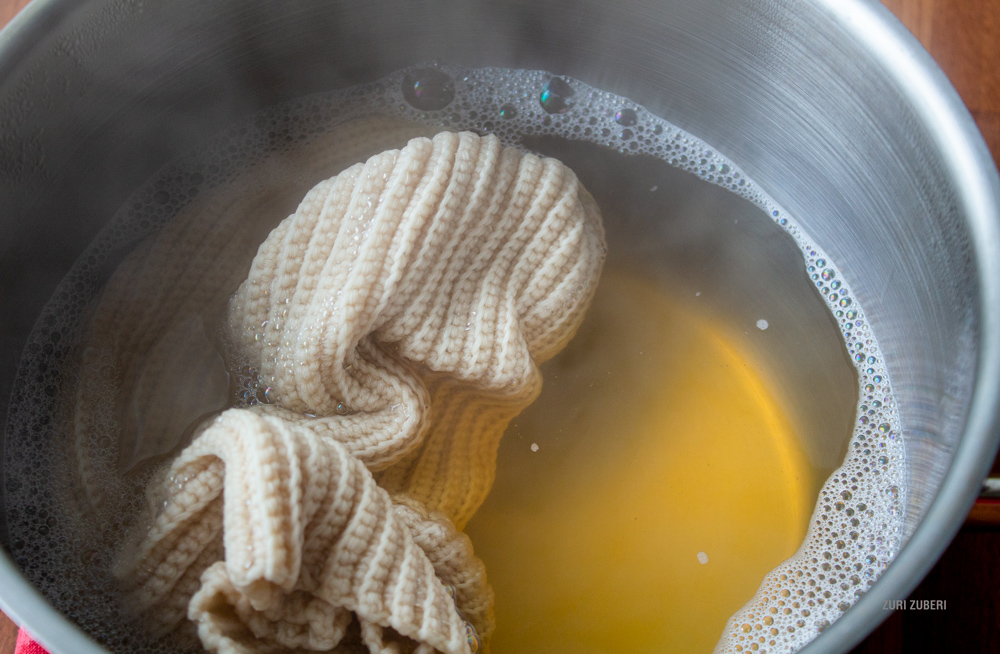
I don’t think this method replaces a proper scouring but I though it might be a bit better than regular hand washing. I can’t remember if the yarn was given to me or if I bought it second hand. Either way it had been with me through a couple of moves but looked quite new. Judging from the colour of the water, there was quite some dirt.
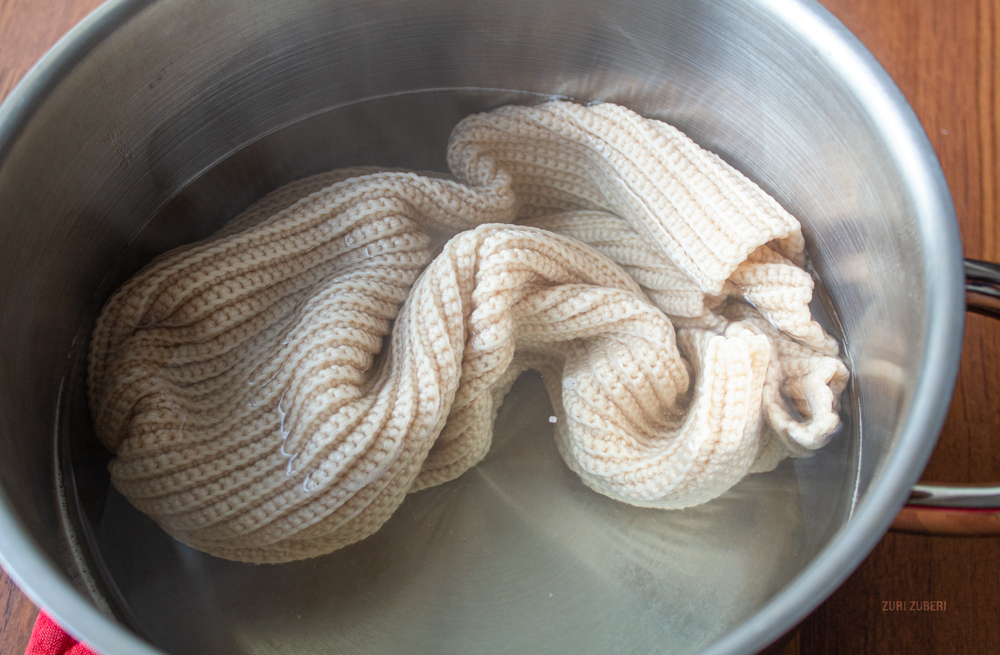
Then I rinsed the beanie thoroughly and gave it another boil with just water before rinsing it again.
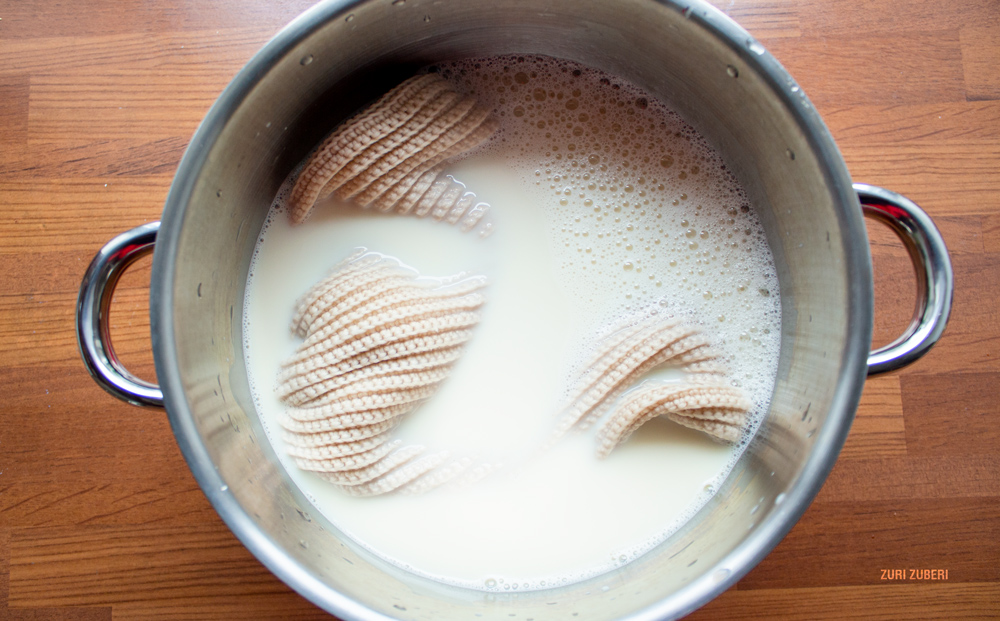
The next step was the soy milk soaking. I wasn’t quite sure what water-soymilk ratio I should go for so I started 1l soymilk and 1l water. I first soaked the beanie for 19 hours, let it dry and then soaked it again for 10 hours. I used the same soy milk, I just had it the fridge while waiting for the beanie to dry.
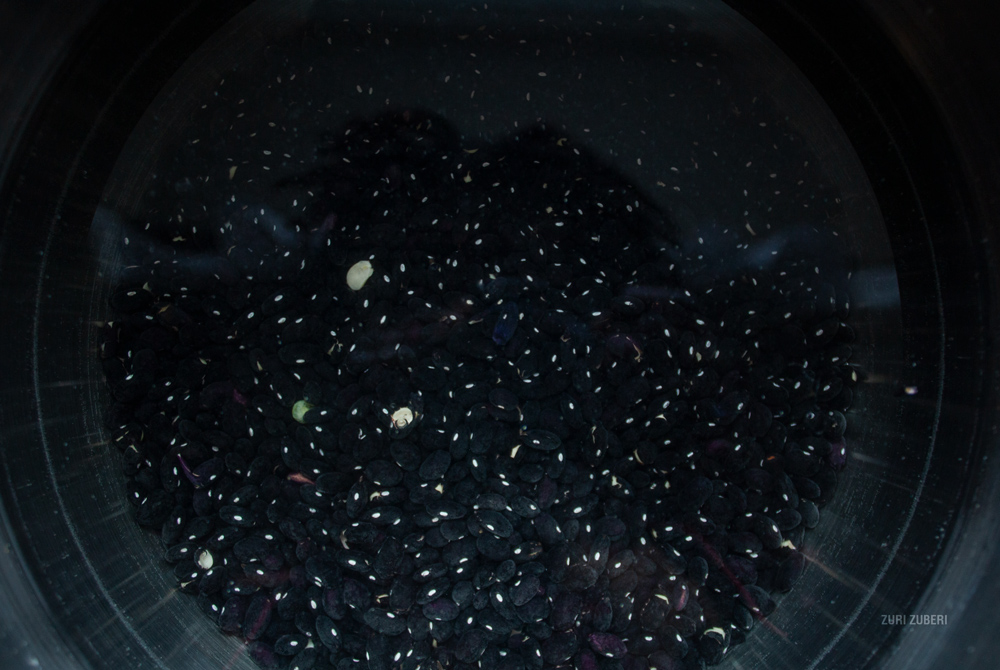
A week later I soaked some black beans. I went with 5dl of black beans and 3l of water and let it soak overnight.
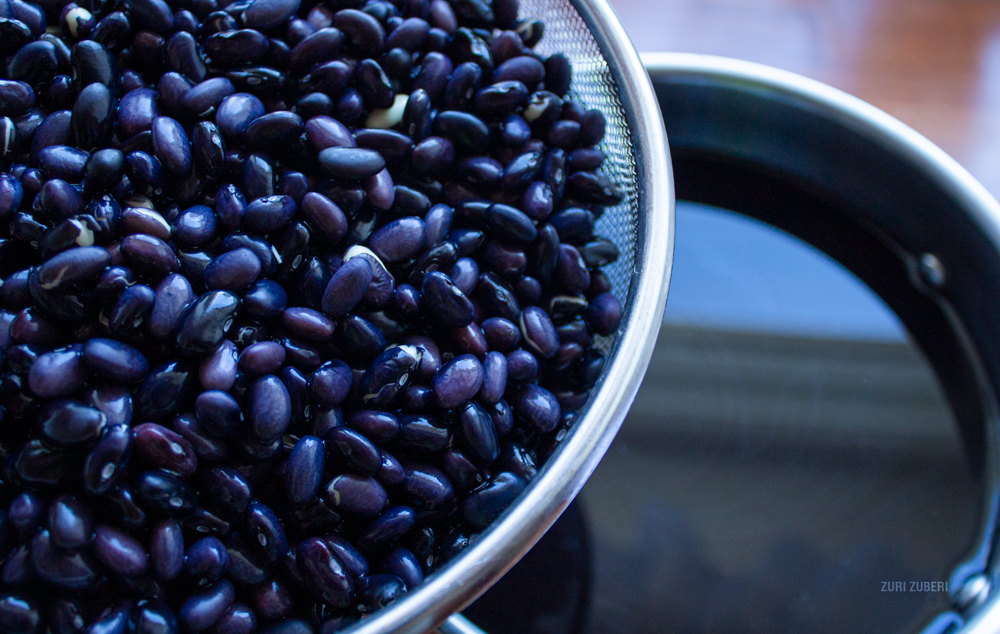
About 24 hours later the bean colour had changed from black to dark purple and the water was this dark plummy colour. The beans were later cooked. Some ended up in the freezer and some in a cholocate mud cake.
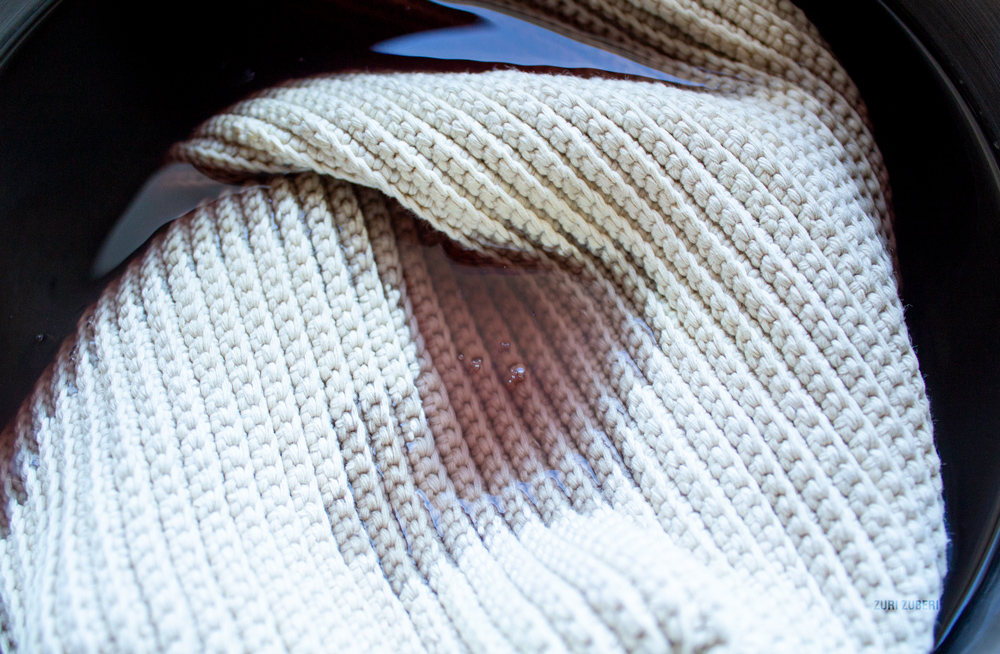
The first dip shows the colour of the bean water at that point. I placed a small ceramic plate on top of the beanie to weigh it down. I used a steel pot because it’s what I had. I’ve read that aluminium potters are better.
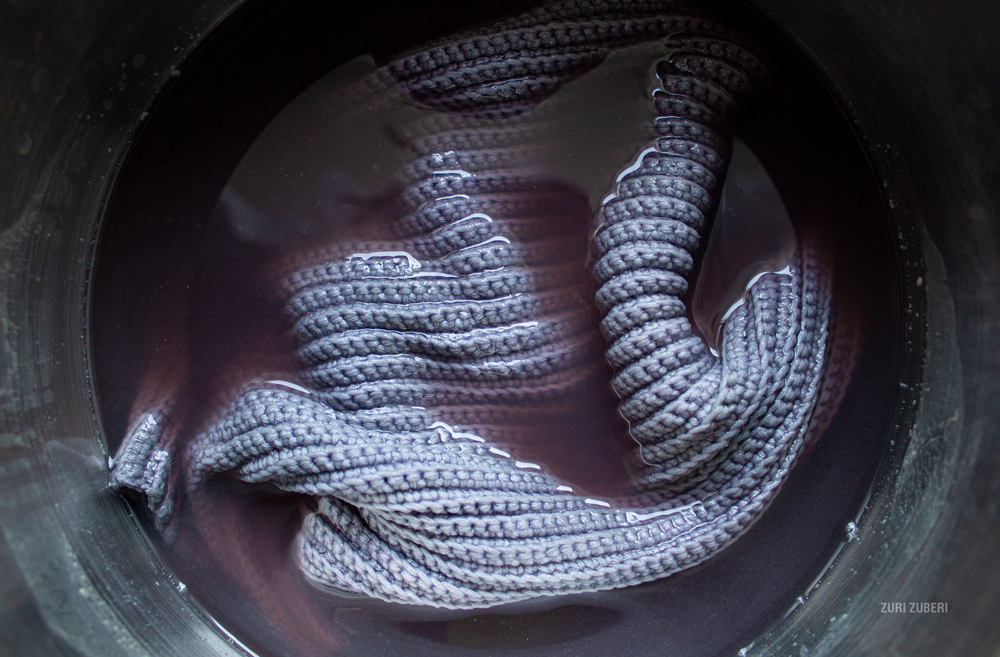
The colour of the beanie 24 hour later.
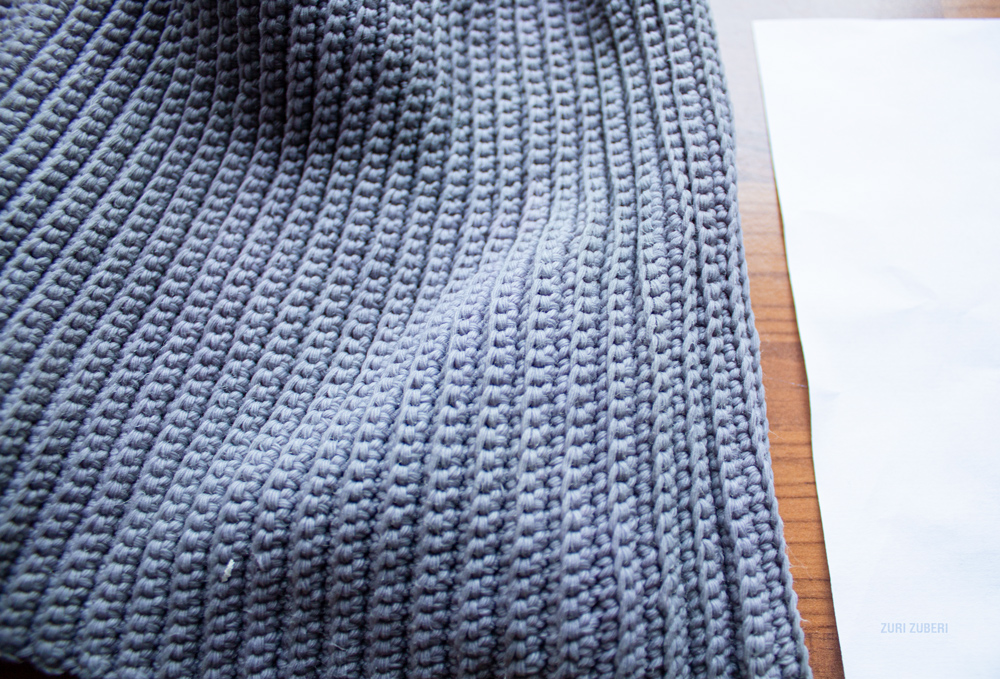
The colour with the beanie still wet after a rinse in cold water.
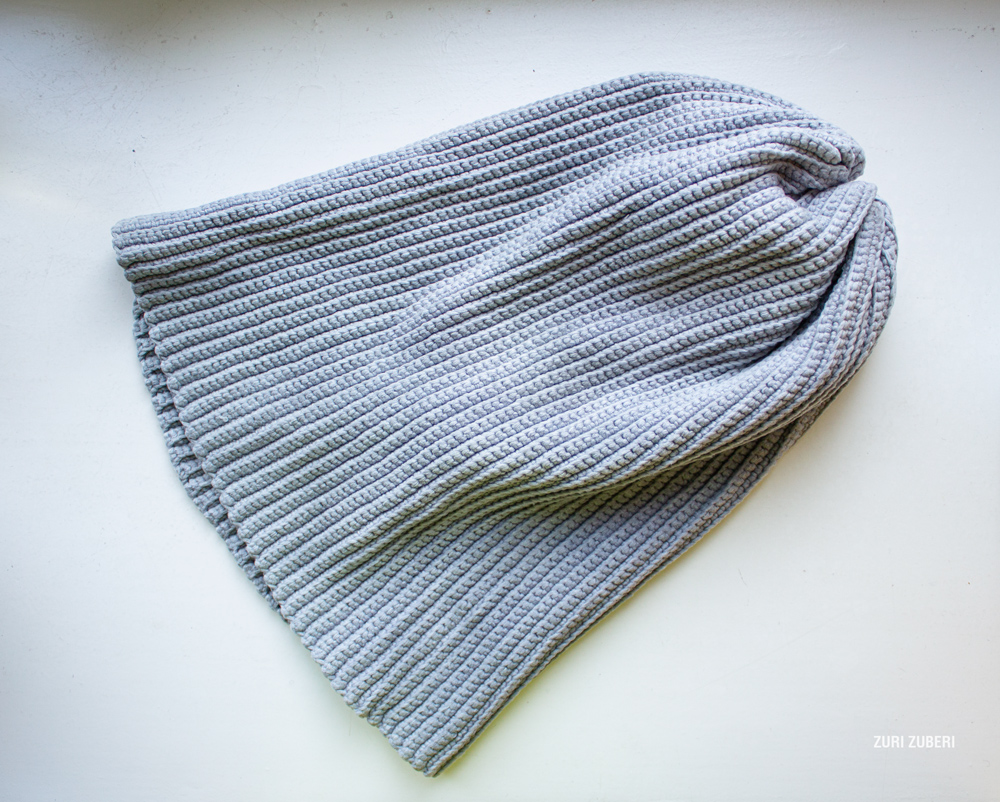
I decided to run the beanie in a 20 min washing machine program without laundry detergent, to get a proper rinse. This is the beanie after that, still wet.
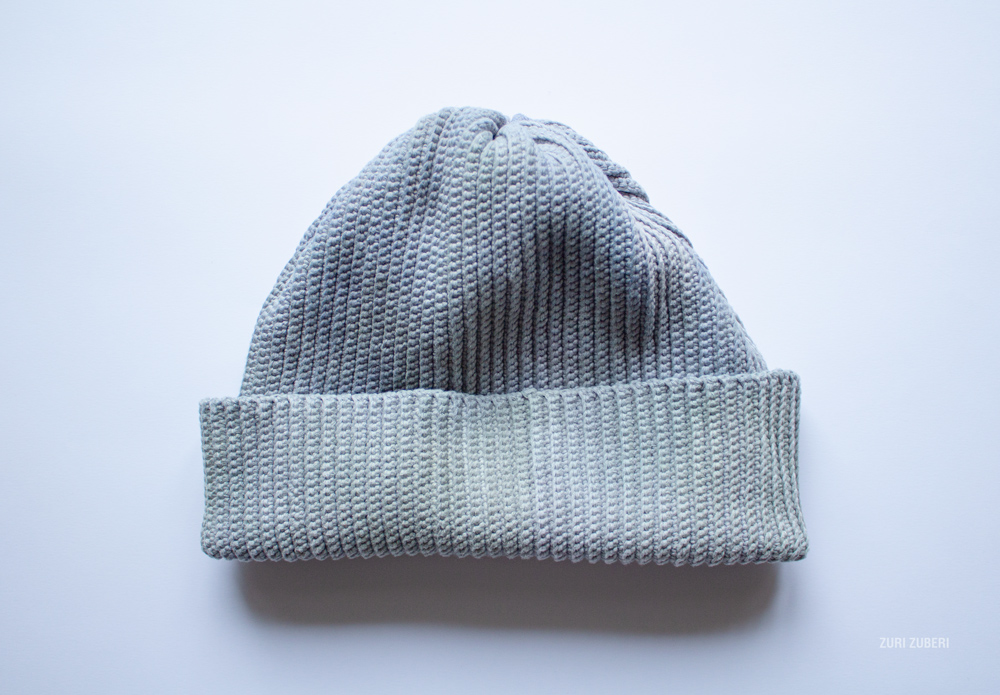
This is what the beanie looked like after it had dried. It has these weird yellow spots, I’m assuming from the soy milk. Some parts are really blue and purple, others a bit more grayish. The more yellow spots were unexpected but I don’t mind the spottiness in general, I never intended to get an even colour.
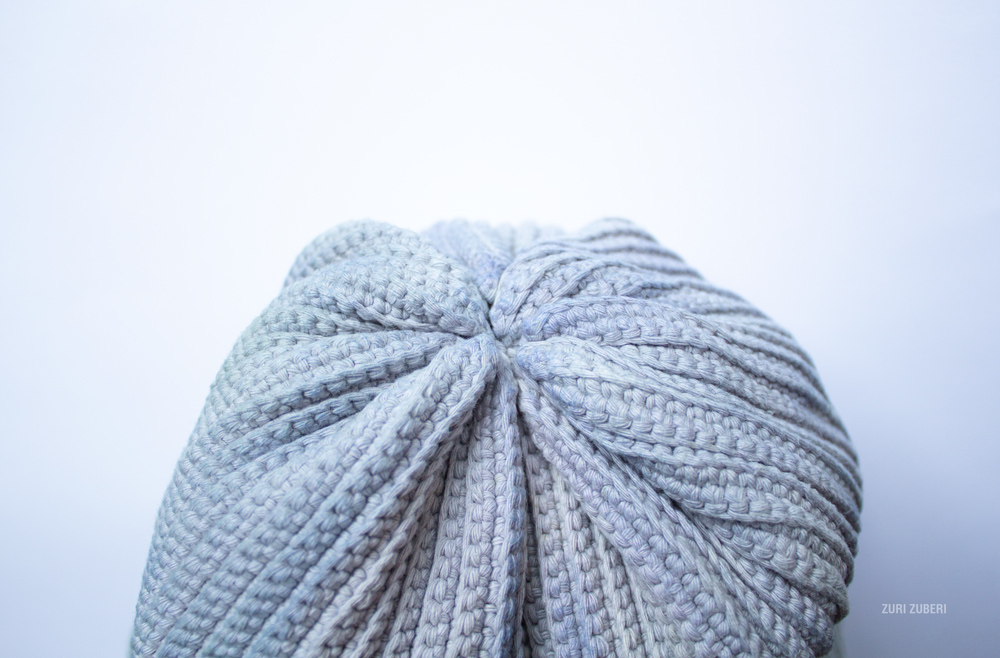
Some parts even appear a bit green. But the light when I photographed this is also a factor.
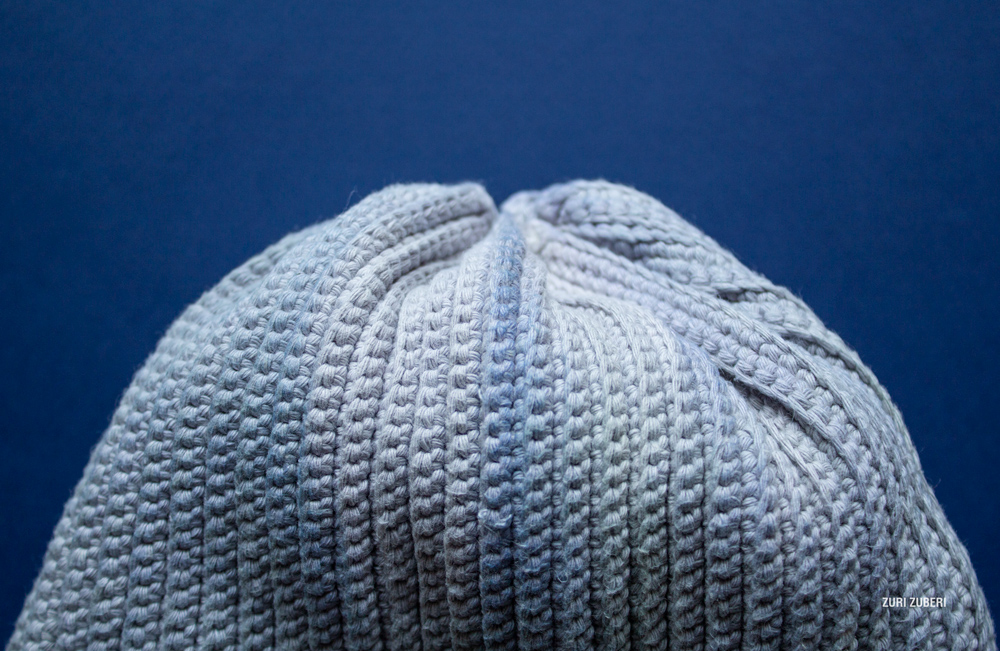
Against a blue background the beanie does appear bluer.
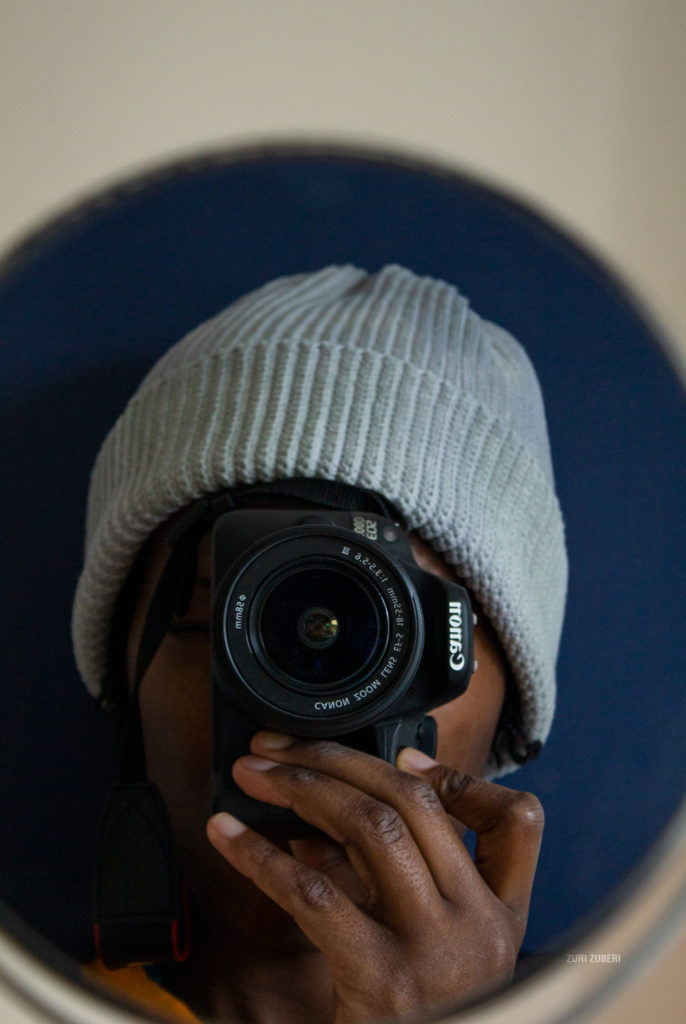
What happens when you’re too lazy to take out your tripod and don’t own a large mirror? Tiny mirror selfie!
Final verdict?
This was a fun experiment, I should definitely have done it sooner and I many ideas for further experiments.
As for this beanie, I’m curious to see how the colour changes after a period of use and a wash or two. I might dye it again the next time I need to cook black beans.
The next dye experiment I want to try is avocado skins. I have been collecting some from my roommates.
Now I’m really curious about your natural dye experiments. Which plants have you tried? Have you used mordants? Let me know!

